These mysterious xylotrophs - getting to know the tree mushrooms
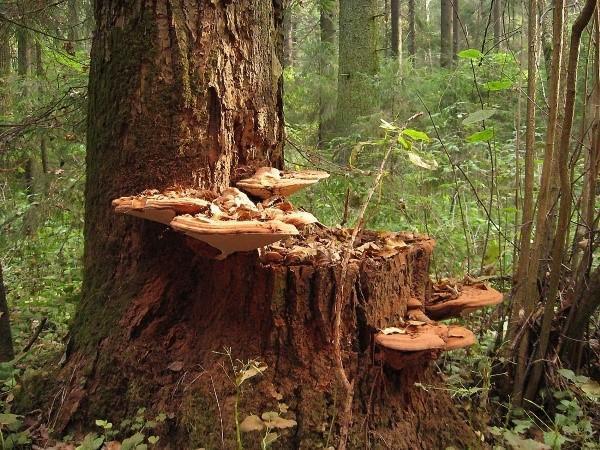 Surely many of us have seen this picture more than once: interesting growths of a bizarre shape grow on stumps, trunks and branches of trees, or mushroom bodies with legs and hats, which are quite familiar to everyone. These are xylotrophs - a separate group of woody fungi that grow on tree species and receive food from there.
Surely many of us have seen this picture more than once: interesting growths of a bizarre shape grow on stumps, trunks and branches of trees, or mushroom bodies with legs and hats, which are quite familiar to everyone. These are xylotrophs - a separate group of woody fungi that grow on tree species and receive food from there.
By their nature, they are fungi parasites and the appearance of such fungi on forest or horticultural crops means that the latter will sooner or later die. Spores penetrate the wood through the slightest crack in the trunk, settle there and begin to actively multiply. Xylotrophs secrete special enzymes that break down wood polysaccharides, including cellulose, and thus mycelium feeds, taking nutrients from the tree. Due to the high concentration of carbon dioxide inside the wood, formed during the development of mycelium, the growth processes of woody fungi have a high speed.
Some species prefer to settle on dead trees, while others prefer exclusively living wood, and there are some mushrooms for which this does not really matter. Take at least honey agaric - they are able to develop on any species, regardless of whether the tree is dead or not.
Most woody mushrooms have a wide, large cap and a short stem, or none at all, and the flesh has a tough structure. Some specimens are almost impossible to separate from the owner, so many people think that xylotrophs have no place in the kitchen. Indeed, inedible species of woody mushrooms prevail in their numbers, however, there are also mushrooms with good gastronomic characteristics among them.
Read: mushrooms false and edible with photo!
Delicious Edible Xylotrophs
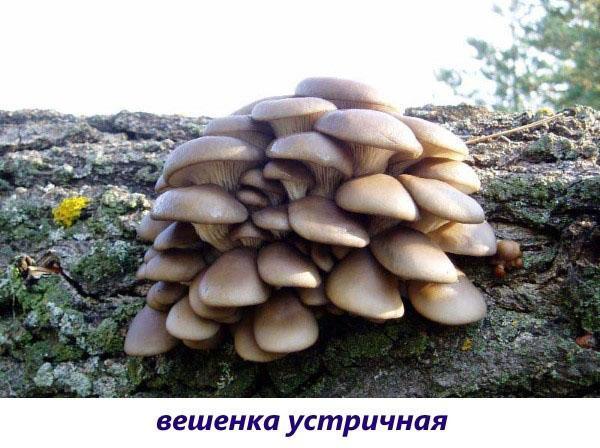 One of the most famous edible woody mushrooms is everyone's favorite oyster mushrooms. Under natural conditions, their mass accumulation can be seen in the Crimean deciduous forests, but oyster mushrooms are also successfully grown in artificial conditions on a special substrate. They grow in large families, the weight of one can exceed 3 kg. One of the tastiest and easiest mushrooms to grow - oyster mushroom oyster or oyster mushroom. It grows in large, multi-tiered and dense "nests", large caps up to 25 cm in diameter have the shape of a funnel and folded edges. As for the color, they are most often light ash, although there are other color variations, from yellowish to dark gray. Under the cap there are rare, wide and white plates, which turn yellow in old mushrooms. The short stem is almost invisible. The pulp smells good, white, dense structure.
One of the most famous edible woody mushrooms is everyone's favorite oyster mushrooms. Under natural conditions, their mass accumulation can be seen in the Crimean deciduous forests, but oyster mushrooms are also successfully grown in artificial conditions on a special substrate. They grow in large families, the weight of one can exceed 3 kg. One of the tastiest and easiest mushrooms to grow - oyster mushroom oyster or oyster mushroom. It grows in large, multi-tiered and dense "nests", large caps up to 25 cm in diameter have the shape of a funnel and folded edges. As for the color, they are most often light ash, although there are other color variations, from yellowish to dark gray. Under the cap there are rare, wide and white plates, which turn yellow in old mushrooms. The short stem is almost invisible. The pulp smells good, white, dense structure.
Oyster mushrooms can live on almost all deciduous trees, dead or weakened. The only exception is oak.
In addition to oyster mushrooms, edible tree mushrooms include:
- Winter mushroom (aka winter mushroom, velvety-footed colibia, enokitake). A small cap with a diameter of up to 10 cm is convex, colored yellow-brown. The stem is thin, tubular, brown, with a reddish tint in the upper part. The pulp is fragile, yellow, smells good, delicious. You can even eat old honey agarics, but without legs.
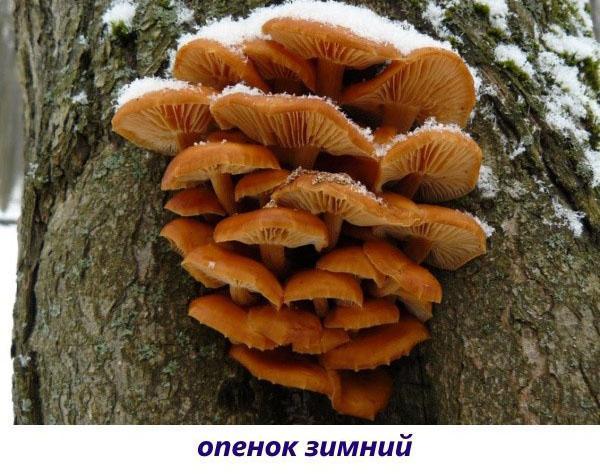
- Shiitake (aka the imperial mushroom, edible lentinula or Japanese forest mushroom).The mushroom is similar in shape to a meadow champignon: an umbrella-shaped brown cap with light plates and dry scaly skin grows on a fibrous stem. The pulp is light, fleshy, with a light peppercorn. They are widely used in Chinese medicine due to not only high culinary, but also their medicinal properties.
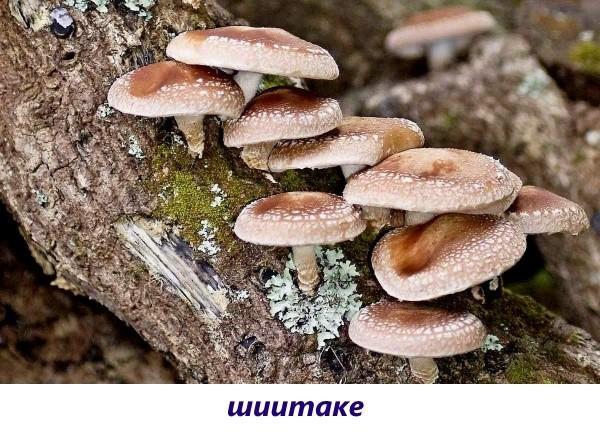
- Muer (aka black Chinese mushroom, auricular auricular or Judas ear). Prefers dead alder trees, in nature it grows mainly in China, but in our country it is found in the East. The fruiting body is thin, auricle-shaped, brown in color. The flesh is tender, jelly-like and silky, slightly crunchy, but becomes rough with age. Healing.
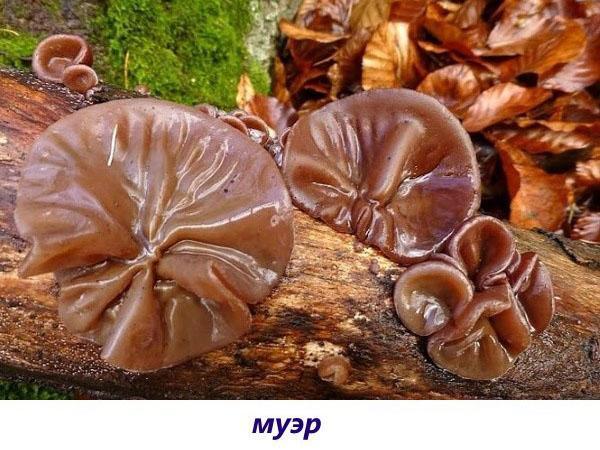
- Tinder fungus sulfur-yellow (aka chicken mushroom or witch's sulfur). Grows on weakened living deciduous trees in the form of multilayer growths of yellow-orange color. Young pulp is very tender, juicy and tasty, old pulp is tough, dry and acidic.
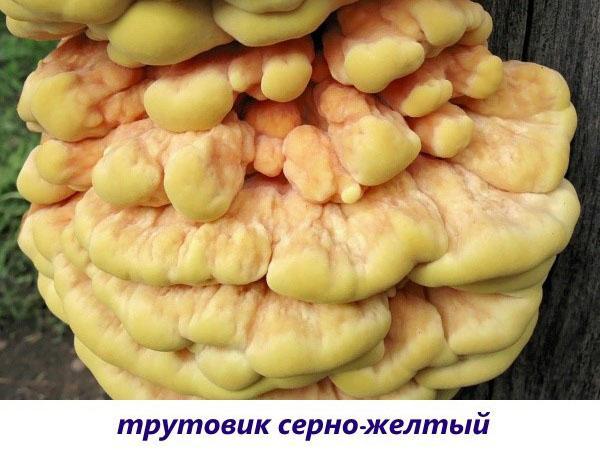
- Curly griffin (aka ram mushroom, leafy tinder fungus or maitake). It grows mainly on stumps of broad-leaved species. The fruiting body consists of many legs, smoothly turning into leaf-shaped caps with wavy edges, painted gray-green-brown with a darker center. The pulp smells like nuts, light and fragile. Old mushrooms are dark and tough.
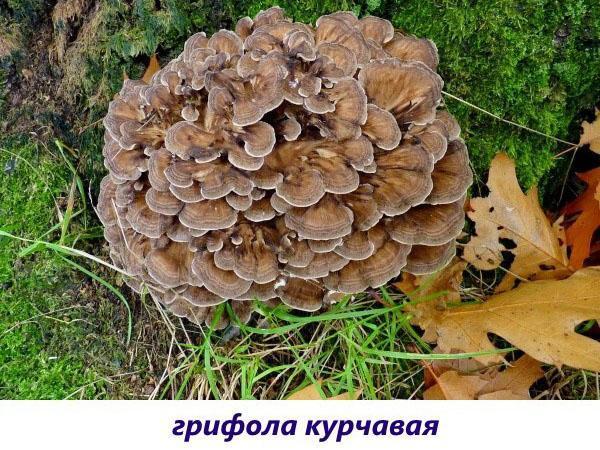
Among the species of woody fungi growing in the form of an outgrowth, young fruit bodies are the most delicious.
Inedible but very beneficial xylotrophs
As already mentioned, most woody mushrooms have tough pulp, which is not at all pleasant to eat, and in some cases it is simply impossible, because it is so hard. However, among them there are very valuable specimens from a medical point of view. On their basis, medicinal products are made that help fight many diseases, including such as oncology.
Some of the most useful woody inedible mushrooms are:
- Chaga larch birch. The fruit body is hoof-shaped, rough, cracked. The skin is off-white, darkens with age. A long-liver, a parasite on a tree up to 20 years, the weight of one mushroom reaches 3 kg. Chaga pulp is yellowish. Most of the nutrients are found in young mushrooms growing on living trees.
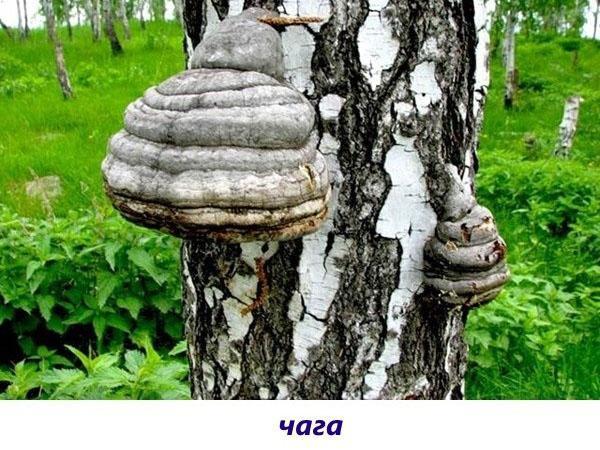
- Lacquered polypore (aka Reishi). Grows on stumps and diseased deciduous trees. It has a small, but very dense leg attached to the side of a very beautiful egg-shaped hat. The surface of the lacquered tinder fungus is shiny and wavy. Rings of a darker shade than the main color go along the hat. The color can be different: orange, red and even yellow-black. The pulp is tasteless and odorless at first spongy, but quickly becomes woody.
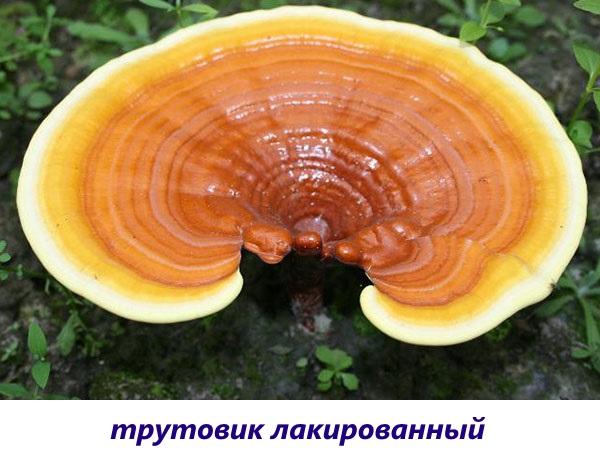
Summing up, we can say that, although tree fungi are parasites that destroy trees and cause great harm to gardeners, nevertheless, some of these specimens are also useful, both in gastronomic terms and in medicine.
Video about growing edible tree mushrooms
I saw it for the first time in the forest, on a stump, presumably a fir tree. What are these mushrooms?
Honey mushrooms